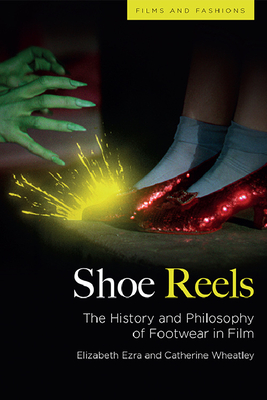Shoe Reels: The History and Philosophy of Footwear in Film

Shoe Reels: The History and Philosophy of Footwear in Film
In his famous interpretation of Vincent Van Gogh's painting A Pair of Peasant's Shoes (1886), Heidegger argues that shoes tell us all we need to know about the world of the person who walks in them. In the case of Van Gogh's painting, we learn this not through a description of the pair of shoes, nor by a report on how to make shoes, but by looking at the shoes. Heidegger thus gestures towards the power of the visual arts to show us human truths through images of footwear and the feet they conceal or reveal, a power that finds its fullest expression in the cinema. From Chaplin's meal of boots (The Gold Rush, 1925), through Powell and Pressburger's Red Shoes (1948) and Dorothy's ruby slippers (The Wizard of Oz, 1939), to Julia Roberts' pvc thigh-highs (Pretty Woman, 1990), Marty McFly's power-lacing Nikes (Back to the Future, 1985) and the slim, spike-heeled stiletto that graces the poster for The Devil Wears Prada (2006), shoes are not only some of the cinema's most enduring icons; they also serve as characterisations, plot devices, soundtracks, metaphors and philosophical touchpoints. This book anaylses their significnace through a range of approaches drawn from the fields of Film Studies, Philosophy, Cultural History, Fashion, Cultural Studies and Politics.
191.46Lei
191.46Lei
Livrare in 2-4 saptamani
Descrierea produsului
In his famous interpretation of Vincent Van Gogh's painting A Pair of Peasant's Shoes (1886), Heidegger argues that shoes tell us all we need to know about the world of the person who walks in them. In the case of Van Gogh's painting, we learn this not through a description of the pair of shoes, nor by a report on how to make shoes, but by looking at the shoes. Heidegger thus gestures towards the power of the visual arts to show us human truths through images of footwear and the feet they conceal or reveal, a power that finds its fullest expression in the cinema. From Chaplin's meal of boots (The Gold Rush, 1925), through Powell and Pressburger's Red Shoes (1948) and Dorothy's ruby slippers (The Wizard of Oz, 1939), to Julia Roberts' pvc thigh-highs (Pretty Woman, 1990), Marty McFly's power-lacing Nikes (Back to the Future, 1985) and the slim, spike-heeled stiletto that graces the poster for The Devil Wears Prada (2006), shoes are not only some of the cinema's most enduring icons; they also serve as characterisations, plot devices, soundtracks, metaphors and philosophical touchpoints. This book anaylses their significnace through a range of approaches drawn from the fields of Film Studies, Philosophy, Cultural History, Fashion, Cultural Studies and Politics.
Detaliile produsului










